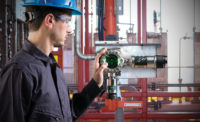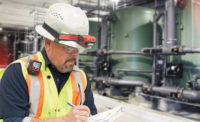Optical flame detectors are proven performers to help protect people and equipment in high value, high-hazard areas and processes. We often hear the question “Where do I start in deciding the type of flame detection system we need for 24/7 protection?” First off, we recommend clearly identifying why the system is needed, and the most likely fire ignition scenarios that need to be detected and mitigated.
Where to start?
After a facility or process owner identifies the most likely sequence of events leading to a fire, a hazard operation analysis including identifying all possible flammable materials within the protected zone is typically performed.
From this analysis, a prioritization of flammable risks can be created, and identification of the optimal flame detection sensing technologies to match the radiant energy emission signature expected from the flammables to be detected.
Different fuels emit unique flame spectra, so not all detectors can detect flames equally. Plus, the presence of optical contaminants and non-fire radiant energy sources within monitored zones impact the performance of certain sensing technologies and installation locations, and must be evaluated.
Onsite coverage considerations
After the hazardous operation analysis is completed and the optimal flame detection technology has been selected, a preliminary performance specification should be identified and documented by the end user. Look for third-party certified performance test reports to validate your proposed performance specification, which will serve as the fundamental coverage template enabling proper assessment of different onsite installation points and alignment angles.
From this performance specification, a preliminary assessment of onsite coverage options can be performed. Common approaches include geographic or scenario coverage assessments.
The geographic approach assesses coverage within a defined geographic fire ignition zone covered by one or more detectors.
The scenario approach specifies the most likely fire scenarios within a zone that can be detected with consideration given to frequency and catastrophic magnitude using defined coverage arrangements.
In all cases, known physical obstructions must be identified and layouts must ensure proper installation locations and coverage to overcome these obstructions.
Mapping detection coverage to reality
When detector installation locations are being considered, the owner or designated installer should audit the flame detection coverage map against the reality of the jobsite whenever possible.
This task generally requires a site walkdown with coverage map in hand and a laser aiming accessory to validate field of view coverage provided by the proposed install locations. Experience has proven it is not uncommon for one or more proposed detector locations or alignment angles to be unsuitable due to undocumented issues such as physical obstruction/blockage, inadequate mounting structure or accessibility, high structural vibration levels, high heat levels, or interposing clouds of process smoke, steam, or other problematic environmental conditions.
Significant technical advancements have occurred in the past decade to improve the baseline performance of optical flame detectors. It still remains incumbent upon the end-user or their assigned contractors to execute due diligence. Perform proper analysis and evaluation of the onsite fire hazards and ensure proper detection technology selection and coverage -- along with proper installation, operations, and maintenance practices -- to attain a continuously reliable, high-performing optical flame detection system.






